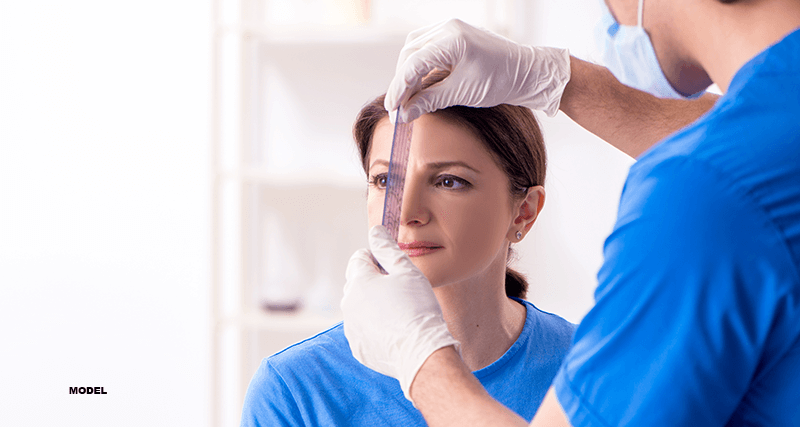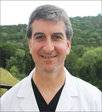Rhinoplasty For Crooked Nose Correction

A crooked nose, caused by various factors such as genetics, trauma, or developmental issues, can negatively impact the aesthetics of the entire face. Fortunately, a rhinoplasty or cosmetic nose surgery, procedure can address the asymmetry and misalignment of a crooked nose. In this blog post, we will discuss rhinoplasty for crooked nose correction, exploring numerous factors including the benefits, considerations, and the journey from consultation to recovery.
What are the Characteristics of a Crooked Nose?
The bridge of your nose should follow a straight line from your brow area to the tip. The deviation from a straight line may be barely noticeable or obvious. There are three classifications for crooked noses. A C-shaped nose is curved like a “C” or reverse “C” to the right or left. An I-shaped nose is generally straight, yet the line from the brow ends just off-center of the tip. A person with an S-shaped nose is deviated to one side in the upper half of the nose, then to the other on the lower half.
What are the Potential Causes of a Crooked Nose?
The three primary causes of a crooked nose are a deviated septum, trauma, and asymmetries during development. The septum is cartilage at the front, bone at the back and separates the right and left airways. An irregular shape of the septum may result in a crooked nose, as well as distinct breathing problems. The top of the septum is the top of the nose, so if a deviation extends all the way to the top, the deviated septum will also cause a bridge deviation. Trauma that causes a crooked nose may involve cartilage, bone, and scar tissue that changes the orientation of your nose. When it also causes a septal deviation it usually has a distinct pattern where the septum is deviated one way on the inside, and the other way on the top. So the bridge will deviate to the side opposite the sepal deviation. This is in contradistinction to congenital deviations, where the bridge usually deviates to the same side as the septal deviation.
How Does Rhinoplasty Correct a Crooked Nose?
Rhinoplasty is performed for cosmetic and functional reasons. From an aesthetic perspective, the procedure aims to correct the curvature of your nose. Almost all crooked noses also have a component of a deviated septum. Since septoplasty is almost always needed to correct an external deviation (since the two are so closely tied), a rhinoplasty surgeon must be skilled in both septoplasty and rhinoplasty.
Benefits of Rhinoplasty for a Crooked Nose
Since a crooked nose is due not only to a deviated septum, but also to nasal bone deviations and external cartilage deviations, rhinoplasty addresses all the components that are crooked: bones, cartilages and septum. This should not only straighten your nose but improve your breathing if the deviation affects the septum and internal nasal valves (where the septum and cartilage sidewalls meet on the inside of the nose).
Who is an Ideal Candidate for the Procedure?
If you are bothered by the crooked shape of your nose, rhinoplasty may be right for you. It is also ideal for people who have a deviated septum that affects nose shape and size, as well as the ability to breathe and clear your sinuses. The surgery is performed under general anesthesia, and you should be in good overall health.
How is Rhinoplasty for a Crooked Nose Performed (Nose Straightening Surgery)?
An individual treatment plan is developed for your nose straightening procedure. The two primary approaches to rhinoplasty are using a closed or open technique. The closed technique involves making incisions inside your nose, and it is typically recommended for straightening a nose that is slightly crooked. For people who require more involved corrections, an open technique is a preferred approach. This involves making an incision in the skin under the nose between your nostrils and exposing the interior of your nose. Repairing your crooked nose may involve reshaping, removing, or adding bone and cartilage.
Do the Bones Have to Be Broken and Reset?
In most crooked nose cases, cutting the bones and mobilizing them to a straighter position allows your nose to heal with a more appropriate shape. Resetting the bone gives your nose a straighter, more symmetrical appearance.
How Long Does It Take to Recover?
The rhinoplasty recovery experience can differ greatly from patient to patient. The initial healing after rhinoplasty surgery takes up to seven days, and you will need to rest during this time. Expect to have swelling, bruising, severe nasal obstruction, and some discomfort. You may have bruising and swelling around your eyes. Non-prescription and/or prescription pain medication helps you feel comfortable. Avoid blowing your nose, and it may be more comfortable to breathe through your mouth. Bruising may last up to 10 days; swelling is not noticeable to others after two or three weeks.
Soft tissues tend to heal first, and this is when you may notice a scar line if an external incision has been made. Initially, the scar is slightly pink, and it changes to a color that is slightly darker than the surrounding skin. The bones of your nose are stable in approximately six weeks.
You can return to more strenuous activities after three to four weeks. As your nose heals, it is important to take extra precautions to protect it. If the bones and cartilages do not heal correctly, you may need a revision rhinoplasty procedure.
Will Medical Insurance Cover This Type of Nose Correction?
Unfortunately, most medical insurance polies will not cover external nose correction as they will often be deemed as cosmetic and not medically necessary. In certain cases, functional rhinoplasty may be covered by insurance if the procedure is performed to correct a breathing issue. Since insurance policies can vary, we recommend contacting your insurance carrier to verify coverage.
